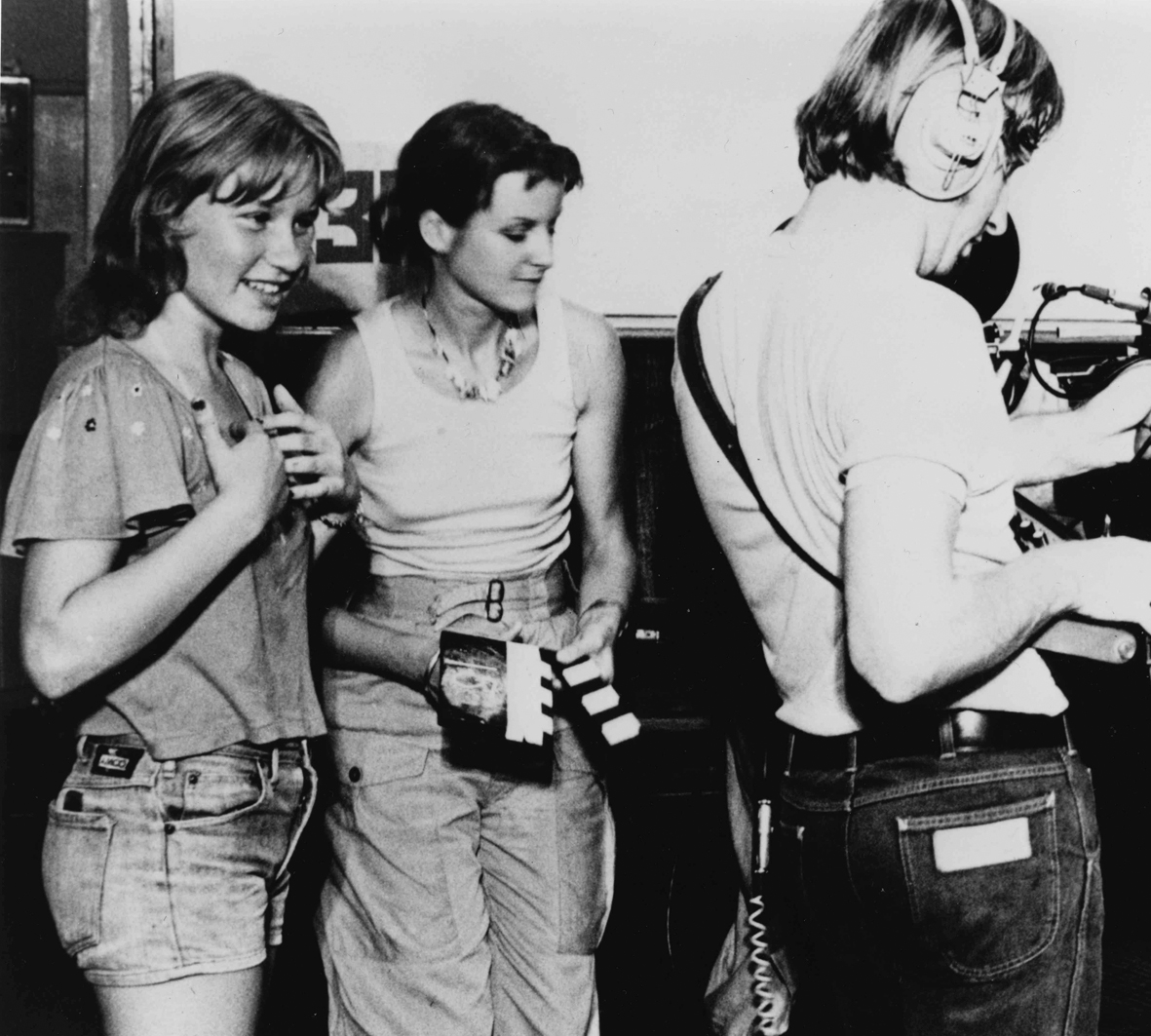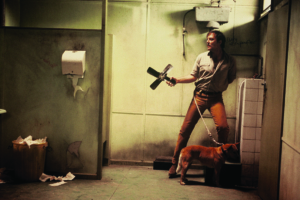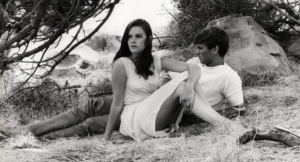Focusing on the lives of three Adelaide women, Gillian Armstrong’s documentary series extends across five films and thirty-four years, featuring Smokes and Lollies (1976), 14’s Good, 18’s Better (1980), Bingo, Bridesmaids and Braces (1988), Not Fourteen Again (1996) and the recently released Love, Lust & Lies (2010).[1]Gillian Armstrong is most renowned for her achievements in fiction filmmaking. As one of the few female directors whose career emerged out of the favourable conditions of the 1970s Australian film revival, she rose to prominence with My Brilliant Career (1979), which was followed by films such as Starstruck (1982), High Tide (1987), The Last Days of Chez Nous (1992) and Oscar and Lucinda (1997). More recently, her oeuvre has had a greater international focus with Little Women (1994), Charlotte Gray (2001) and Death Defying Acts (2007). She has also directed a number of documentaries in addition to the Smokes and Lollies series. The most recent is Unfolding Florence: The Many Lives of Florence Broadhurst (2006). Inevitably, the Armstrong series is frequently compared to the British Up series directed by Michael Apted.[2]The first film, Seven Up! (1964), was actually directed by Paul Almond, with Apted serving as a researcher. All the subsequent instalments were directed by Apted. However, Armstrong’s documentaries differ in several significant ways. Commissioned as a half-hour stand-alone documentary for television, the first instalment was never intended to be the beginning of a series. Due to this, Armstrong’s documentaries, although certainly inspired by the Apted series, have been less determined by a consistent formula, with episodes not occurring at regular intervals, only the final three reaching feature length and a different narrative structure shaping each documentary. Moreover, rather than a cast of fourteen documentary subjects, this series only has three, allowing for a much more intimate and concentrated study.
Perhaps the most important difference is in the way the Up series was inspired by the Jesuit saying ‘Give me a child until he is seven and I will give you the man’. The British series compares children of differing class backgrounds, exploring how early conditioning and privilege play a role in the course of one’s life. Armstrong’s series, however, has been more exclusively concerned with gender and with the close examination of the lives of three working-class Australian women who happened to be teenagers in the 1970s. In her director study of Armstrong, Felicity Collins takes issue with the series, arguing that the lack of any historical contextualisation of the women’s lives leaves the films ambiguous in terms of a social or feminist agenda.[3]Felicity Collins, The Films of Gillian Armstrong, ATOM, St Kilda, 1999. In this essay I explore this notion of history while also looking at different dimensions of time, including the intricate links between the spectacle of time passing, temporality within the documentary form and changing gender identity in the series. I argue that far from being absent, a historical politics of feminism haunts the series and its reception in a number of ways.
As the series has developed, it has encouraged in the audience a distinctly affective and subjective identification with indexicality – each instalment asks us, especially women, to measure our progress, life choices, disappointments and achievements against theirs.
Collins observes that although Armstrong’s documentary series is sometimes regarded as a social history of women, and thus of working-class Australia, no historical events are documented in the films. This lack of ‘history’, of socially significant events, makes it difficult to determine precisely what happens in the films.[4]ibid., p.70. This is a critique frequently levelled at exclusively character-based or observational documentary. This absence of political (H)istory prevents the films from making overtly political statements. However, the films foreground the individual, specifically individual histories, in a manner that promotes the spectator’s recognition of cultural differences and similarities, such as class, gender, race or generation. In this way, the focus on the individual subject suggests a way of reading the social world on political, and often feminist, terms. Explicitly drawing attention to the lives of white, underclass Adelaide women, Smokes and Lollies was motivated by some of the concerns brought to prominence by the second-wave feminism of the 1960s and 1970s; the series is, in fact, entrenched in this history.
The visible evidence offered by documentary is frequently valued for its capacity to present an index of actual occurrences. As the series has developed, it has encouraged in the audience a distinctly affective and subjective identification with indexicality – each instalment asks us, especially women, to measure our progress, life choices, disappointments and achievements against theirs. Bill Nichols insightfully describes the spectator’s unique recognition of the subject in documentary:
Recognition involves a sudden click or shift of levels as information, sensory impressions, arrange themselves into a larger gestalt. In this case, the shift is from a recognition of a human figure to its placement as a particular, historical figure.[5]Bill Nichols, Representing
Reality, Indiana University Press, Bloomington, 1991, p.161.
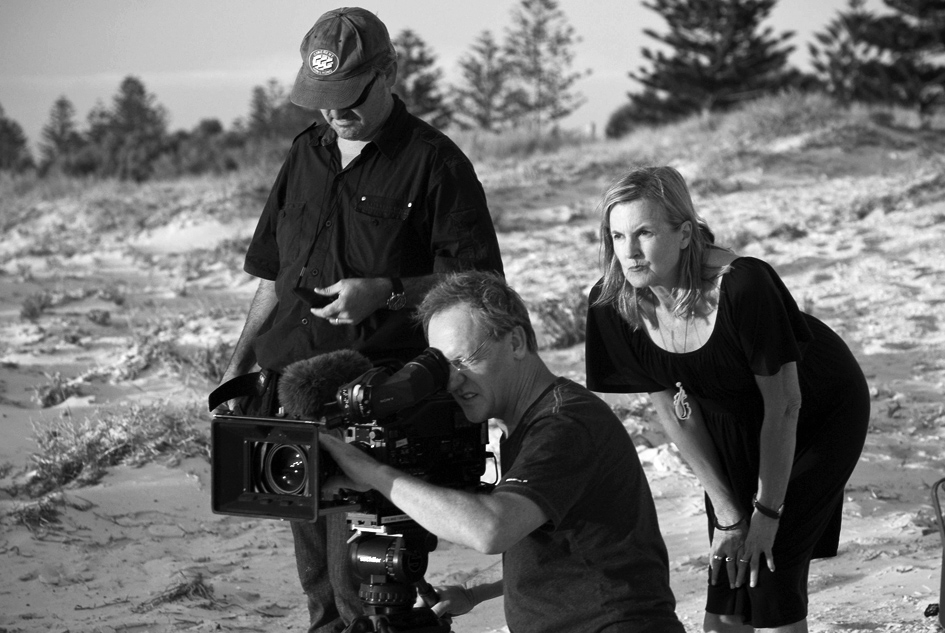
There are a number of ways in which Armstrong’s documentary series seeks this recognition of the individual as located within history in terms of changing social attitudes, particularly those concerning gender, and as an individual ‘in time’, changing as the years progress. Both of these are strikingly apparent when all five films are viewed in sequence.
Each film works as a self-contained document of the women’s changing lives, introducing these lives anew each time for the viewer. Utilising significant footage from previous instalments, the series is characterised by repetition and accumulation. The three different kitchen tables in the homes of Kerry, Diana and Josie are central motifs in Smokes and Lollies. These same tables, and the original scenes featuring them, return in each subsequent film, as does the scene of Diana brusquely washing dishes as she describes, in voice-over, being expelled from school. While these scenes are repeated, other similar domestic scenes at tables and at kitchen sinks proliferate alongside them as the adult domestic lives of the women unfold.
The views expressed in the early interview scenes become increasingly indicative of and bound to the historical time of their articulation. We see the face of Kerry’s mother in close-up as Armstrong questions her about how she would feel if her daughter became pregnant at fourteen. In her response she talks, reluctantly, about sex education and the film shown at school that ‘had everything in it’ and that replaced the need for her to talk to her daughter about sex. Diana is shown at the kitchen table with her parents. She crosses her eyes after her father observes ‘a girl can get into trouble. A boy can’t.’ Most poignant is the scene in the second film, 14’s Good, 18’s Better, when Josie describes being in hospital after having her first baby at fifteen. Alone and without visitors, she sent flowers to herself under a random name picked from the telephone book. These scenes are a reminder of social mores of the 1970s, such as the stigma of teenage motherhood, attitudes towards sex and the dangers facing adolescent girls. Including these scenes, and their sentiments, in later films reveals them as moments of transition as they are contrasted with present-day values and attitudes.
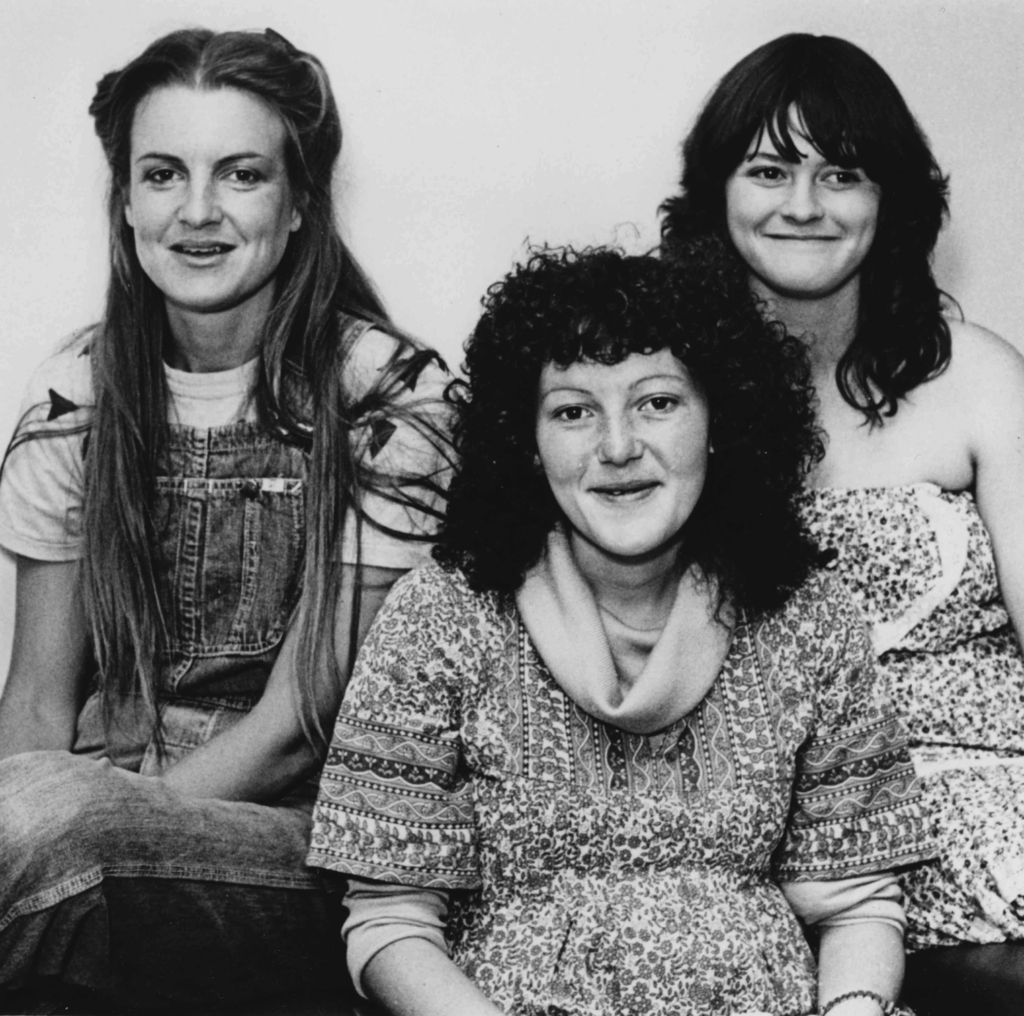
Even though only four years pass between the first two films, this is where the most marked change occurs, partly because the girls were practically children when the first film was made. As I have noted elsewhere, documentaries about children capture the movement of time in unique ways as change occurs more rapidly: ‘Not only do they alter visibly as their bodies change, but the way in which child-subjects narrate their experiences and their perceptions of the world shifts significantly over increments of time.’[6]Belinda Smaill, The Documentary: Politics, Emotion, Culture, Palgrave Macmillan, Basingstoke, 2010, p.144. In the first documentary, Armstrong asks the girls questions about how they see their life to come: whether they will have children, what kind of mother they would be, what kind of husband they imagine and the work they would like to do. These are impossible questions because they are about the future; they seek an outline of an imagined future from subjects who are only beginning to conceive of the future as a complex reality. In 14’s Good, 18’s Better, the girls had reached the age they had imagined so thoroughly in the first film – eighteen was to be the age when so many milestones had been reached. When asked what kind of mother they would be, all suggested they would follow their own mother’s example, contrasting with the rebelliousness expressed in the earlier film. In the second film, as adults, their responses are significantly different to the first film. Each instalment in the series relies upon the spectator’s desire to see change in the self, in terms of physicality, psychological maturity and environment.
As footage from the past and present is edited together in each film, the face of each woman is juxtaposed with her progressively older face, which is then supplemented by the faces of partners and children. For Collins, each film adds a new set of older faces to the original three fourteen-year-old faces. She perceives this to create a problem of recognition, because with each ensuing episode ‘the task for the viewer of recognizing these celluloid faces becomes more demanding.’[7]Collins, op. cit., p.74. Again, this is a question of indexicality, as the viewer must become accustomed to the new, older faces of Josie, Kerry and Diana and must recognise them as an authentic updating. Yet it is also a measure of our own changing faces as we identify with their ageing – it is an index of what it is to be human.
These different modalities of recognition occur for the spectator, along with the implicit understanding that time continues for these women off-screen, away from our episodic encounters with them. Nevertheless, each new film condenses time in a way that defies the passage of years. This is heightened in Love, Lust & Lies, a film that draws on thirty-four years of footage. Collins views the crisis of continuity that this abbreviation could engender to be a source of pleasure and anxiety for the viewer: ‘real time has been suspended in favor of the non-human scale of cinematic time.’[8]ibid., p.75. Yet this documentary series is a cogent example of the way cinematic time can both abbreviate and amplify real time. Malin Wahlberg suggests that the performance of the documentary subject can lengthen duration: ‘In documentary the poignant event of time passing often seems to result from the assumingly spontaneous performance of the social actor.’[9]Malin Wahlberg, Documentary Time: Film and Phenomenology, University of Minnesota Press, Minneapolis, 2008, p.91. The camera’s close attention to ‘a pause for effect, a frown of irritation, and signs of intimidation or hesitation’[10]ibid., p.91. may focus attention on the real meaning of what is being said, or not said, in such a way as to slow the unfolding of time. This occurs a number of times in Armstrong’s series. A notable example occurs near the conclusion of Not Fourteen Again. On one of the few occasions when Armstrong pushes her interviewees to reveal information, the moments that follow as Diana reluctantly tells us she is pregnant and is unsure what she will do about it seem to expand. In these different ways, cinematic time is inseparable from the movement of the self, the individual, as they change over time. This in turn, as I have argued, positions the subject and the viewer’s recognition of this documentary subject in history.
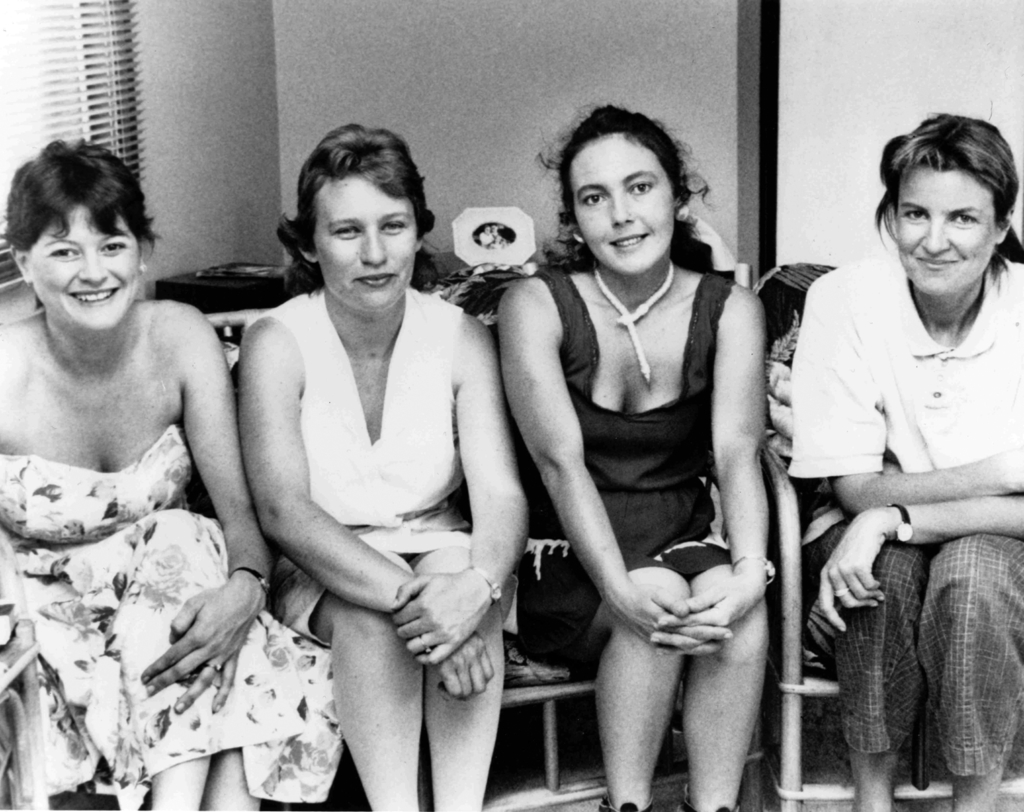
As discussed earlier, there is also a different temporal integrity to the structure of each film. This is most evident in Bingo, Bridesmaids and Braces, the third film in the series, made when the women were twenty-six. The central focus of this film is Kerry and Neil’s wedding. Kerry is the last to get married and the only one without children. By this film Josie has two small girls and Diana has three. When Armstrong heard Kerry was getting married she decided this would be a suitable time to continue documenting the women’s lives. Kerry’s segment of the resulting film concentrates on her wedding preparations, the hen’s night and the day of the wedding. These events are drawn out in detail while the screen time devoted to Diana and Josie follows their domestic life and conveys, in voice-overs and interviews, their reflections and self-perceptions. In this film the three different lives are thrown into stark contrast, perhaps to an exaggerated degree. The frivolity and enjoyment of Kerry’s hen’s night is heightened as scenes of the ‘party bus’, the disco and the male stripper are repeatedly intercut with domestic scenes of Diana and Josie. At one point, a scene with the near-naked stripper dancing in front of Kerry in the nightclub is followed by a sequence with Josie and her children at bingo, her voice-over stating, ‘I enjoy my bingo on a Sunday night’. This visual juxtaposition magnifies the different lifestyles of and life choices made by the two women.
If there is an impetus in the films towards life getting better, or a striving for a better life and a better future, this is balanced out by an equal amount of ‘making do’ with the hand that life has dealt.
If there is an impetus in the films towards life getting better, or a striving for a better life and a better future, this is balanced out by an equal amount of ‘making do’ with the hand that life has dealt. This is especially the case in the most recent instalment, Love, Lust & Lies. An interim of fourteen years separates this film from its predecessor. The documentary revolves around extended family (two of the women now have grandchildren) but also a coming to terms with the past and an acceptance of the difficulties they have faced. In this film, the differences between the women are consolidated and fleshed out by the subtleties of maturity and reflection. Josie is determined and survives no matter what life throws her way – this determination is channelled into drastic, and at times impulsive, changes in the realms of work and love. Diana has always seemed brazen and unruly, but against the odds has maintained a stable family life right up until her split with Keith a year before the final film (when she returned to her childhood sweetheart, Fury, who is also the father of her youngest son, Beauh). Kerry, perhaps the most reserved and measured of the three, has remained in the same house and is the only one to stay with the same partner. All still struggle financially. While the number of faces and personalities has proliferated, with children and grandchildren becoming a much greater focus, especially three of the adult daughters of Josie and Diana, the camera remains most focused on the three original cast members.
In Love, Lust & Lies, changing technology frames a portion of the relationship between this film and earlier episodes. In the opening and closing scenes, moments from the earlier films appear on a large flat-screen television, effectively offering a double frame to these images. The televisual framing offers a window onto the past and consciously references the television viewing experience that the three women have shared over the years with the series’ broader, largely Australian audience (all of the documentaries have been broadcast on Australian television). Near the conclusion of the film, Kerry, Diana and Josie sit on a sofa together, viewing a similar moment from Not Fourteen Again when the three were reunited. In their discussion each makes reference to the word ‘time’, drawing out the relationship between their past and present selves – Diana: ‘Its my time now’; Josie: ‘My time’s coming’; Kerry: ‘And you look at that and think where’s that time gone?’ They comment on the things that have become important to them – Josie and Kerry have a desire to spend more time with their families, even though this is at the expense of work and income. Diana would still like to be earning more money. Inevitably, Armstrong asks them where they would like to be in ten years.
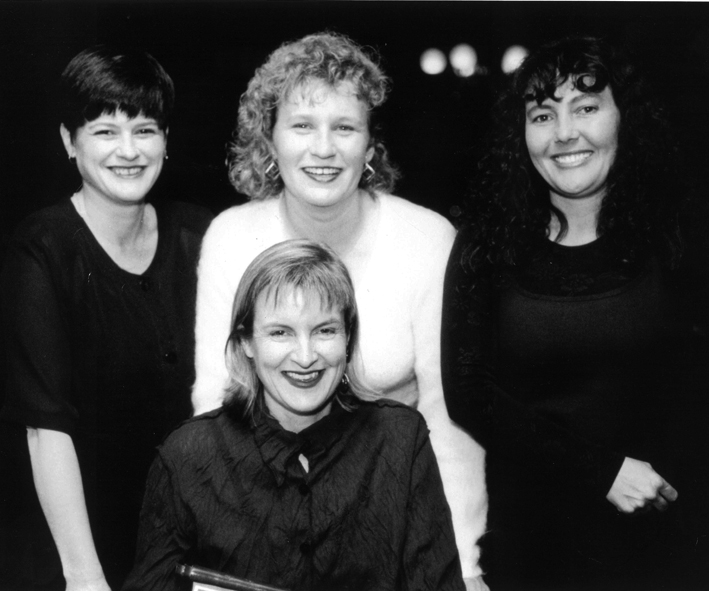
The women’s musings over time could be seen as mirroring the place of feminism in the women’s lives. While, as I have noted, history, and especially a history of feminist politics, is not featured explicitly in the series, it remains an implicit backdrop and is consistently referred to by reviewers when they offer a context to the genesis of the documentaries.[11]See, for example, Liz Galinovic, ‘Love, Lust & Lies’, Jive TV, 30 September 2010, <http://jivetv.com.au/sydney/news-and-features/reviews/love-lust-and-lies>, accessed 8 November 2010; Kirsten Krauth, ‘Confessions and Generations: Gillian Armstrong’s Love, Lust & Lies’, Realtime 97, 24 May 2010, <http://www.realtimearts.net/article/96/9845>, accessed 8 November 2010; Rochelle Siemienowicz, ‘Love, Lust & Lies: An Interview with Gillian Armstrong’, Australian Film Institute, May 2010, <http://www.afi.org.au/AM/ContentManagerNet/HTMLDisplay.aspx?ContentID=10727&Section=Love_Lust_and_Lies_An_Interview_with_Gillian_Armstrong>, accessed 8 November 2010. While the initial premise of the first film was to explore the figure of the new, liberated young woman – a product of feminism – the three girls Armstrong felt drawn to make the film about reflected a very different experience. Their views and environment were almost untouched by the equality-based popular feminism of the 1970s. Yet, paradoxically, the personal freedoms advocated by the ‘sexual revolution’ were expressed in the girls’ articulation of their own sexual agency. Nevertheless, the early films, as cultural documents, testify that feminism was not engendering universal change in women’s lives. For these three feminism was ‘untimely’ in the sense that it did not occur in time to have a significant impact on their worlds.
The spectre of a broadly articulated historical politics of feminism haunts the series and its reception. In reference to notions of political histories, Wendy Brown writes:
While ghosts are ‘furtive and untimely,’ coming and going as they please, they can also be conjured and exorcised – solicited, beckoned, invoked, dismissed – and thus made to live in the present or leave the present in a manner that shapes both the possibilities for and constraints on the future.[12]Wendy Brown, Politics Out of History, Princeton University Press, Princeton, 2001, p.151.
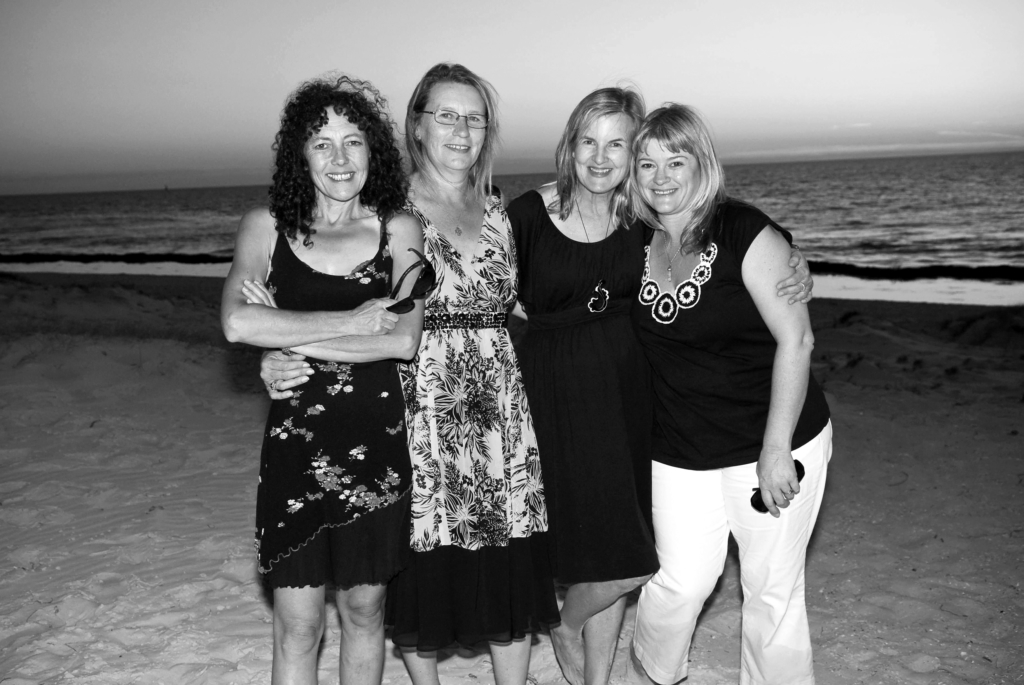
In this way, particular histories are ever-present, but are made use of selectively. Brown’s metaphor offers a useful way to think about how a history of feminism might be embedded in a system of representation and reception – not as an explicit reference, but as a haunting. Crucially, the notoriety and longevity the series has achieved in 2010 encourages an important recognition and invocation of a history (including a contemporary history) of feminism at a time when it is under erasure as a popular discourse. In a slightly different way, Armstrong herself lends a feminist ethos to the circulation of the series; she is the implicit fourth woman whose image occasionally appears on screen and whose voice poses questions from off-screen. She is the first audience for the trio’s revelations and reflections. In many ways Armstrong, with her accomplished international film career, haunts the series as the ‘liberated’ and enabled young 1970s woman that Smokes and Lollies was to initially focus on.
The notoriety and longevity the series has achieved in 2010 encourages an important recognition and invocation of a history (including a contemporary history) of feminism at a time when it is under erasure as a popular discourse.
At a time when women’s filmmaking practice and scholarship is emphasising national, transnational or minority cinemas, pluralism or the politics of race, the Smokes and Lollies series is anachronistic – it is again ‘untimely.’ In continuing to value the import of three average white, heterosexual women’s intimate lives, it bears the traces of the mode of feminism framing the first film. Yet the popular success of the films is evidence that they are transcending both their location within a ‘women’s cinema’ and their anchoring within a particular social moment. I argue that the films remain relevant because of the mode of temporal recognition they seek to address: they ask us to meditate on the experience of time passing and how our identity, our selfhood, is tied to this. The manipulation of documentary and lived time, the invocation of political histories, the expression of historically specific biases or expectations and the way the women’s changing lives contrast with one another all work towards achieving a specific impact on the viewer. They are all geared towards stirring a recognition of our own affective relationship, as viewers, to the actions, environment and even the faces of these three Adelaide women. This is a relationship characterised by pleasure, anxiety, optimism, sadness and surprise across the intricate revelations of all five documentaries, culminating in Love, Lust & Lies, the most encompassing and, more than likely, final film.
This article has been refereed.
Endnotes
| 1 | Gillian Armstrong is most renowned for her achievements in fiction filmmaking. As one of the few female directors whose career emerged out of the favourable conditions of the 1970s Australian film revival, she rose to prominence with My Brilliant Career (1979), which was followed by films such as Starstruck (1982), High Tide (1987), The Last Days of Chez Nous (1992) and Oscar and Lucinda (1997). More recently, her oeuvre has had a greater international focus with Little Women (1994), Charlotte Gray (2001) and Death Defying Acts (2007). She has also directed a number of documentaries in addition to the Smokes and Lollies series. The most recent is Unfolding Florence: The Many Lives of Florence Broadhurst (2006). |
|---|---|
| 2 | The first film, Seven Up! (1964), was actually directed by Paul Almond, with Apted serving as a researcher. All the subsequent instalments were directed by Apted. |
| 3 | Felicity Collins, The Films of Gillian Armstrong, ATOM, St Kilda, 1999. |
| 4 | ibid., p.70. |
| 5 | Bill Nichols, Representing Reality, Indiana University Press, Bloomington, 1991, p.161. |
| 6 | Belinda Smaill, The Documentary: Politics, Emotion, Culture, Palgrave Macmillan, Basingstoke, 2010, p.144. |
| 7 | Collins, op. cit., p.74. |
| 8 | ibid., p.75. |
| 9 | Malin Wahlberg, Documentary Time: Film and Phenomenology, University of Minnesota Press, Minneapolis, 2008, p.91. |
| 10 | ibid., p.91. |
| 11 | See, for example, Liz Galinovic, ‘Love, Lust & Lies’, Jive TV, 30 September 2010, <http://jivetv.com.au/sydney/news-and-features/reviews/love-lust-and-lies>, accessed 8 November 2010; Kirsten Krauth, ‘Confessions and Generations: Gillian Armstrong’s Love, Lust & Lies’, Realtime 97, 24 May 2010, <http://www.realtimearts.net/article/96/9845>, accessed 8 November 2010; Rochelle Siemienowicz, ‘Love, Lust & Lies: An Interview with Gillian Armstrong’, Australian Film Institute, May 2010, <http://www.afi.org.au/AM/ContentManagerNet/HTMLDisplay.aspx?ContentID=10727&Section=Love_Lust_and_Lies_An_Interview_with_Gillian_Armstrong>, accessed 8 November 2010. |
| 12 | Wendy Brown, Politics Out of History, Princeton University Press, Princeton, 2001, p.151. |
